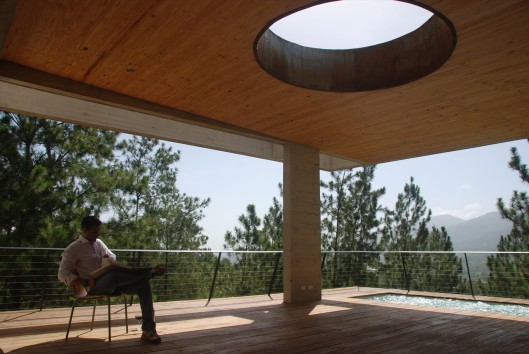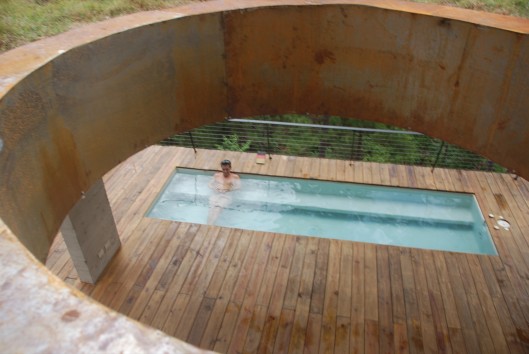RD House keeps naturally cool inside a Dominican Republic hillside
February 12, 2014

The rear sections of the RD House come into direct contact with the hillside, so are naturally kept a constantly cool temperature by the huge volume of rock (Photo: Eduardo Abreu)
Cave homes, pit houses and other part or fully-underground dwellings all offer benefits in energy efficiency when compared to typical above-ground homes, thanks to natural insulating properties that help to maintain a near-constant interior temperature. Architectural firm Vasho made use of the same principle to keep RD House cool by partially burying it within a steep Dominican Republic hillside.
Completed in 2013, RD House has a total floor space of 500 sq m (5,381 sq ft), and was a challenging project to bring about, requiring extensive waterproofing of the rear areas of the home, plus the laborious (and environmentally-destructive) process of excavating large quantities of rock. Much of the rock removed was however later re-used as a construction material.
The home's rear sections come into direct contact with the hillside, so are naturally kept a constantly cool temperature by the huge volume of rock. The forward areas and balconies also feature ample natural sunlight and outdoor areas.
RD House boasts extensive home automation, allowing fine control of lighting, entertainment devices, jacuzzi, and related amenities. It also contains a water treatment plant for the re-use of grey water, while multiple green roofs serve the dual purpose of helping the home blend into the hillside, and providing a degree of solar insulation.
Just how effective the part-placement of RD House into the hillside is at lowering the interior temperature isn't clear, but the fact that it's used as a summer home and needs no mechanical cooling system, air-conditioning or otherwise, suggests it certainly helps.
Source: Vasho via Arch Daily


